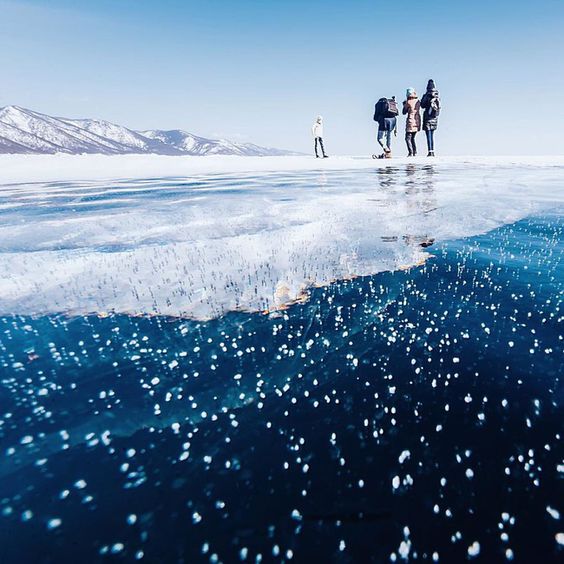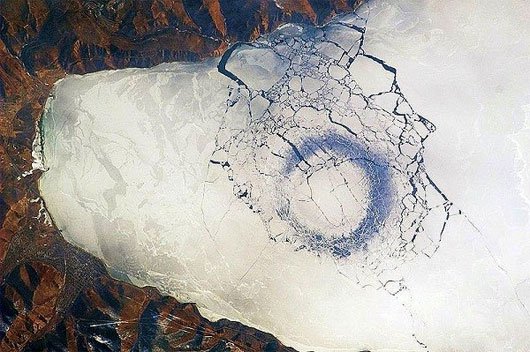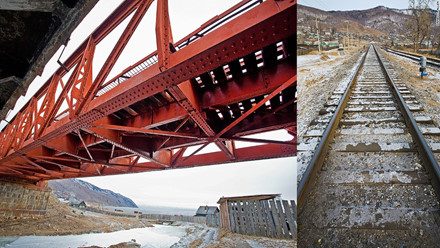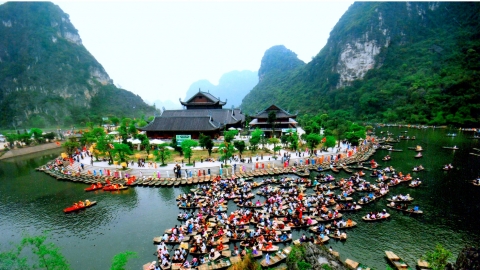Leaving the mysteries unsolved, on warm days Lake Baikal becomes more charming than ever with cracks and melting ice.
Watching the clear lake surface
Located in Eastern Siberia, 20-25 million years old, Lake Baikal, formerly known as the Sacred Sea, was formed from an ancient valley in the shape of a long crescent with a surface area of about 31,722 km² with an average depth of 744 m, the deepest reaching 1,620 m. The lake accounts for 1/5 of the freshwater area on the planet's surface, is home to more than 1,700 species of flora and fauna, 2/3 of which are rare and extremely rare. For example, the unique Golomyanka fish with a transparent body, does not lay eggs, but gives birth to young fish, or the seal called Nerpa Baikal. Believed to have migrated here from the Northern Arctic Ocean more than 800,000 years ago, these small seals have become the symbol of the magical Baikal natural heritage.

Lake Baikal has been a World Heritage Site since 1996. The eastern shore of Lake Baikal is home to the Buryat people, who raise goats, camels, cows, and sheep, in a harsh environment where winter temperatures can drop to −19°C (−2°F) and summer temperatures can reach 14°C. In winter, when temperatures drop to -2°C, the entire lake freezes over and gradually thaws until June. But sometimes, the ice on the lake breaks into icy waves, making sounds like breaking glass and ice. In winter and spring, Lake Baikal attracts thousands of tourists because of its stunning beauty.

According to photographer Kristina Makeeva, who has documented her images and experiences of the vibrancy of Lake Baikal's surface: Even though the ice can be up to 1.5 m thick, you can still look through the clear water to see fish, plants, and rocks 40 m below.

The ice is so thick and solid that people can stand, walk, and drive on it. In some places, the ice is so thick it can hold a car weighing up to 13,000 kg, and photographer Makeeva says she has seen some unlucky vehicles. In 2015, a group of explorers spent two weeks exploring the lake on World War II-era Russian motorcycles. As the weather warmed, the ice cracked and the expedition had a few accidents, but fortunately, they lived to tell the tale.

Unsolved mysteries
According to legend, Lake Baikal has some kind of “supernatural magic” that makes drinking its water prolong human life. That’s why many people are willing to soak in the water even at sub-zero temperatures to achieve immortality.

Many experts have discovered that Lake Baikal glows, and they have been constantly studying this phenomenon.

Water samples at different depths of the lake showed that the luminescence intensity of the lake water decreased with depth and the range of variation from surface to bottom reached 100 photons or more.

In addition, the discovery of some circles appearing on the ice surface of the lake also made scientists "crazy". They rushed into research and unfortunately, there was still no exact answer, so the "signs of aliens" solution was still attributed to the author!

Travelers who want to explore Lake Baikal will take the Trans-Siberian Railway from Moscow to Valdivostok, a journey of over 10,000 km, and a stop in Irkutsk – the capital of eastern Siberia. This place has many ancient churches, ancient architecture and lovely cafes.

After resting in Irkutsk, you will have a journey to admire and conquer, explore Lake Baikal with many unsolved mysteries. And if you admire the beauty of the cracked ice of Lake Baikal - that means you are very lucky to witness one of the most impressive beauties of nature!

















_result.jpg.jpg)




_result.jpg.jpg)







